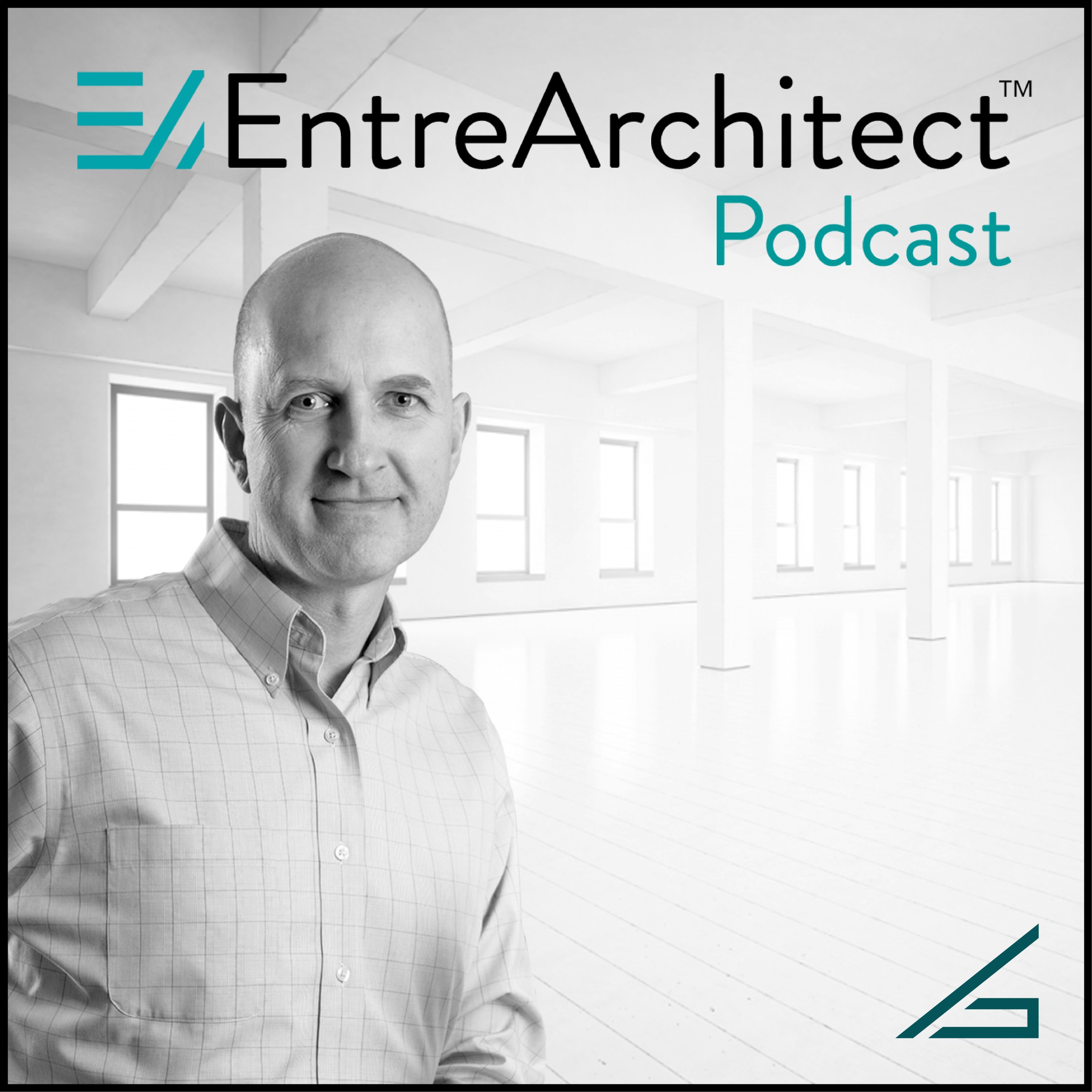
 Developing Specifications for Small Projects
Developing Specifications for Small Projects
How do you put together specifications for your projects as a small firm architect? Do you put them on drawings? Do you use a separate project manual? Should you use outline specifications? What are the different options for small firm architects putting together construction documents for a small project? Is there anything out there to make this process easier?
This week at EntreArchitect Podcast, Bill Jannott from ARCAT.com discusses Developing Specifications for Small Projects and the Future of Technology!
Bill’s Origin Story
When Bill was growing up, his dad was running Sweets catalogs publishing building and construction materials. Following that, he created the Architect’s Catalog in 1991 with just a few sales reps. One thing led to another, and Bill ended up taking a position with ARCAT.com, then a small website with only 13 pages. Aside from the home page, there were 12 pages of specifications that architects could access and use in their projects.
Through a series of developments taking short, concise specs and adding a user interface around them, they created a program where someone could spec out an entire project in about 4 minutes.
Why is ARCAT a free resource and how do you make money?
They make money because every manufacturer pays to have their content on the website. Historically, architects don’t want to spend money on stuff like this and, if they are being charged, they’re not likely to keep up with the latest version.
What’s the difference between outline specifications and short form?
Short form is a smaller, 3-part spec. The outline is mostly where you define the product and its attributes and characteristics.
What’s included in a typical outline specification that could become the document for a project?
For example, in a residential project you may need several different kinds of paint: exterior, interior, and maybe a stain for the deck. The outline spec will have three parts, one for each product. You may or may not want to assign manufacturers, but the option is there.
What’s the advantage to having specifications?
If you don’t, the quality of your project will not be as high as you want because you won’t get the products and manufacturers that you want to use. If something goes wrong, a lot of finger pointing tends to happen. If you know your manufacturer and the quality of their project, you’re not going to get a call from the homeowner down the road that something isn’t holding up. If you have high quality materials specified in your plans and someone decides to go with a different material, you have a legally binding document to protect you.
What’s in the future for architecture and specifications?
Spec writers seem to be a dying breed, which is a shame as it’s such an important part of the process. ARCAT is updating their version of outline specs, and part of the new system is something along the lines of Trello where users have the ability to create new tasks, invite team members to be a part of projects, kick around ideas, add photos, and more.
How do you see virtual reality changing the way architects design?
Bill feels that virtual reality will completely change how architects work through the initial concepts of design. Right now, we start with pencil, pen and paper. The only negative of that, is the great sketch you’ve made is 2D. Virtual reality allows for the same process, in 3D. Where sometimes software can get in the way of creativity, the option to create a sketch in virtual reality doesn’t get in of your way but allows you to express your creativity without barriers.
What else is coming toward the architecture world in the future?
The goal of technology advances like virtual reality is to create ways for things to be done more efficiently and effectively. Things like artificial intelligence and virtual reality both have the possibility to change every industry, including the architecture industry, for the better. Machine learning is able to do tedious and mundane tasks quickly, allowing the human to think more creatively.
As an architect, imagine if you take the information from your clients and your sketches and the information you have and throw it all in a box. If that box can take the information in and spit out a digital set of documents, how much easier would your job be? How much more free would you be to figure out more creative, human pieces that make each project unique?
What is the one thing that small firm architects can do today to build a better business tomorrow?
“Listen to podcasts. There’s a bunch of good architectural small business, and “how to make yourself a more performant person” podcasts out there. Podcasts are very niche, you won’t find the same information on the radio or on TV. Every podcast I listen to serves my interests and my needs. They’ll enlighten you in so many ways, expand your thinking, and make you a better architect and person.” – Bill Jannott
Connect with the Bill online at ARCAT.com or find them on Facebook, Twitter, Pinterest, and LinkedIn.
Visit our Platform Sponsors
NCARB is helping architects reach their goals! Visit NCARB.org to learn more today.
TruStile is a leader in high end, architectural interior doors. Visit them at TruStile.com to learn more!
Freshbooks is the easy way to send invoices, manage expenses, and track your time. Learn more at FreshBooks.com. Access Your 30-Day Free Trial at FreshBooks.com/architect (Enter EntreArchitect)
Referenced in this Episode
EntreArchitect Profit Plan Course (free)
EntreArchitect Podcast Episode 127: 6 Technologies That Will Radically Change the Architecture Profession in Less Than 10 Years (Podcast)
Photo Credit: Shutterstock / NicoElNino

Thank you for this! I started my own firm in a niche for very small residential projects. My projects do not warrant a project manual. But lately I feel the need to provide something more than notes on a sheet, but I certainly could not budget spec software yet, nor would I have the time to dig in since I am solo, running all parts of this machine. I am not sure if my need for a project manual stems from the fact that I worked in the municipal and public sector for twenty years on very large jobs. I don’t feel “right” if I don’t have a project manual! This is a great solution to my need. THANK YOU! This was a great podcast. I appreciate it.